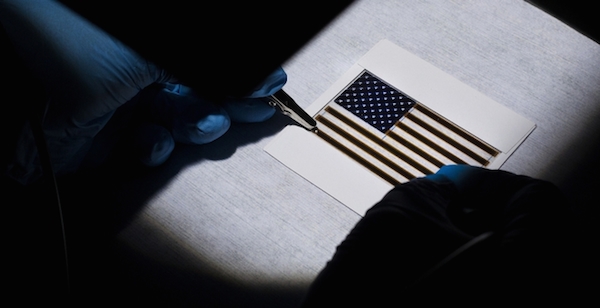
A team of researchers at the University of Michigan has successfully developed a prototype of a semi-transparent photovoltaic solar cell, which they hope will make solar arrays more attractive to consumers and lead to a more widespread adoption. Existing solar panels are far from aesthetically pleasing, but this new invention could be used to cover the sides of buildings, window shades and even billboards without obscuring what lies beneath.
The team wanted to produce a solar cell that could be placed anywhere, and not just on rooftops as is the case with currently available solar panel arrays. At the same time they wanted to create a solar cell that would give designers more freedom when creating plans for solar powered homes. The solar cells they developed can be made into an ultrathin sheet available in various semi-transparent colors.
The cells the team developed are made of an ultrathin (6 to 31 nm) sheet of amorphous silicon, which is sandwiched between two semi-transparent electrodes. These enable sunlight to hit the semiconductor, while they are also capable of carrying the electrical current generated by the cell.
Utilizing a hybrid organic and inorganic structure in the production of the solar cells allowed the researchers to make them10 times thinner than traditional amorphous silicon solar cells. The organic layer utilized in the cells also replaces a thick ‘doped’ region that would typically control the flow of electricity in a standard solar cell.
The cells the researchers developed are mechanically structured to transmit specific wavelengths of light, which is made possible by varying the thickness of the amorphous silicon layer that they contain. To illustrate this, the team made a prototype of a cell that is colored like the US flag, in which the red regions are 31 nanometers thick, while the blue regions are only 6 nanometers thick. Both regions work to transmit or reflect those colors to the human eye.

One of the drawbacks of these new solar cells is the fact that they are not as effective at transforming sunlight into energy as traditional, black colored solar PVs are. This is mainly due to the fact that the colored areas of the new cells reflect the colors back to our eyes, rather than using it all to create power. But the fact that these new cells could be used anywhere on a building, and become part of the building design itself, could lead to a much more widespread adoption of solar arrays. This would render their lower efficiency a moot point.
Related Articles on JetsonGreen.com:
Researchers Develop Self-Healing Solar Cells
Solar Cells Might Soon be Made of Paper
Colored Solar Panels Hit California Market

Leave a Reply
You must be logged in to post a comment.